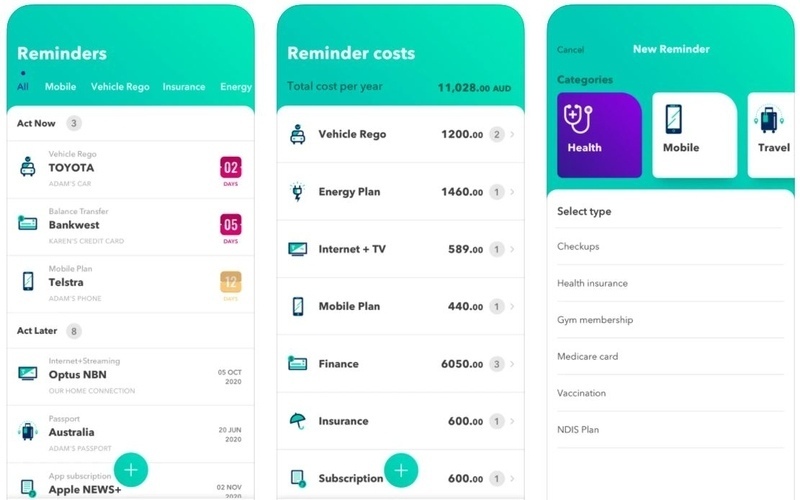Taming inflation remains the underlying theme of Jim Chalmers' third budget which he’s promised will be one of “relief, restraint, and reform”.
The long-touted stage three tax cuts will form the foundation of cost-of-living relief measures which must be finely balanced to ensure any extra money in the economy will not fuel stubborn inflation.
The Reserve Bank of Australia has repeatedly stated it will not drop interest rates until inflation is within its 2-3% target band.
At its last official reading, annualised inflation came in at 3.6% with the RBA board saying it doesn’t expect inflation to fall to target until December 2025.
Much more bullish was Federal Treasury’s own pre-Budget forecast that inflation will be at the target rate by this Christmas, thanks to a further slowdown in economic growth.
AMP chief economist Dr Shane Oliver said Tuesday's budget looks like it's going to be mainly about whether it makes the RBA's job in fight inflation easier or harder in the near term.
Dr Oliver expects minimal cost-of-living measures although predicts an extension to energy bill relief.
Dr Chalmers will also be trying to assure voters his government is up to the task of easing cost-of-living pressures in his government's final budget before next year’s federal election.
He told the ABC this budget would offer no “slash and burn” cuts and no spending “free-for-all” either.
So will there be any surprises in the budget?
As has been the case in recent political times, many of the budget’s key measures have already been drip-fed or kite-flown to newsies and the general public.
These include formalising changes to the stage three tax cuts and, more recently, the federal government’s Future Made in Australia manufacturing plan.
There’s also been some speculation there may be more relief in cutting energy costs although there have been no specifics at this stage.
Last year’s budget also saw energy bill relief measures for households and small businesses.
What we know about the budget so far
Tax cuts
Under the changes to the stage three tax cuts, low- and middle-income earners will reap greater benefits than higher income earners.
A person on $50,000 will get a $929 tax cut, significantly more than the $125 originally promised.
Earners on $90,000 will have their tax cut increased from $1,125 to $1,929.
People earning $160,000 will have their cut reduced to $3,729 from the originally promised $4,675.
Housing
Dr Chalmers has promised there will be a “major focus” on alleviating Australia’s chronic housing shortages.
Late on Friday, it announced there will be an $11.3 billion package to address the housing crisis.
It seems much of that figure will be made up of existing programs although it remains to be seen whether any new initiatives will be announced.
The government will invest $90.6 million to boost the number of skilled workers in the construction and housing sector.
There’s also an expectation the Federal Government will increase rent assistance as part of extending rebates and concessions for those on income support payments and pensions.
Parents
Superannuation will now be paid on the 20 weeks of government-funded parental leave from 1 July 2025 (if the Albanese Government is re-elected).
The measure was announced in March with costings now at $1.1 billion over four years, then more than $600 million a year after that, well above original estimates.
Education
Student loans will be reduced by an average of $1,200 under moves to reduce HECS/HELP debts.
Uni debtors will be credited the indexed amount, backdated to last year when the indexation rate was 7.1%.
This would see someone with a residual balance of $25,000 receive a credit of about $1,120.
Indexation will now also apply to the lower of wages growth or inflation.
Nursing, teaching, and midwifery students will also be eligible for a $320 a week payment for practical placements as part of their university courses.
Pay increases
It’s tipped the federal budget will also set aside funds for pay rises to aged care and childcare workers.
Dr Chalmers has also previously trumpeted budget figures of a real recovery in household disposable income, forecast to be 3.5% higher in 2024-25, mainly driven by wages growth.
Future Made in Australia Program
There will be a dedicated $1 billion to boost the production of solar panels in Australia as well as $940 million towards developing the country's first quantum computer.
Budget bottom line
The government is widely expected to deliver a second consecutive budget surplus, tipped to be around $9.3 billion.
Dr Oliver said this would largely be driven by higher than forecast commodity prices and personal tax collections.
Expert opinion
Dr Oliver said that with inflation proving sticky, the Budget needs to take more out of the economy for the next financial year than it puts back in so as to make the RBA's job easier.
"Any near-term spending associated with cost of living relief, 'Future Made in Australia' subsidies, or other measures should be more than offset by savings elsewhere," he said.
He said extra spending will add to the upward drift of government spending as a share of the economy.
The December mid-year review of federal spending as a share of GDP was already projected to average 26.2% over the long term, well above the pre-pandemic average of 24.8%.
Dr Oliver - as with many other economists and commentators - is also not a fan of the 'protectionist' Future Made in Australia initiative.
"Ever bigger government and now a return to the failed industry policies of the past, i.e. to pick winners and protectionism, are not the answer to Australia's poor productivity performance," he said. "In fact, they risk making it worse."
The 2024-25 Federal Budget will be handed down on Tuesday at 7:30pm AEST.
Image by Aditya Joshi on Unsplash



 Harrison Astbury
Harrison Astbury
 Harry O'Sullivan
Harry O'Sullivan

 Rachel Horan
Rachel Horan
 Hanan Dervisevic
Hanan Dervisevic

